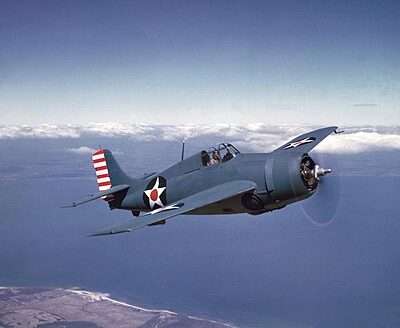The History of USS Hornet
The might of an aircraft carrier lies in its ability to quickly move about the world’s oceans, projecting power whenever and wherever it is needed. The heart of a carrier’s combat strength is its aircraft; her Air Groups provided Hornet’s lethal sting. Hornet’s success was dependent on the capabilities of highly trained pilots and aircrews and the specialized aircraft that operated from her flight deck.
In World War II, her air groups consisted of a fighter (VF) squadron, a bombing (VB) squadron and a torpedo (VT) squadron. During the 1950s as naval warfare technology evolved, so too did the complexity and specialty of carrier-based aircraft. Joining the classic fighter and attack aircraft were electronic/early warning, photo-reconnaissance, and anti-submarine warfare aircraft. Dual-role aircraft also provided aerial tanking and limited cargo capabilities and helicopters proved essential to carrier operations which included search and rescue missions.
World War II Combat Record Awards

USS Hornet (CV-12) was awarded nine Battle Stars for Pacific service in World War II:
- One Star — Asiatic-Pacific Raids – 1944
- One Star — Hollandia Operation – 1944
- One Star — Marianas Operation – 1944
- One Star — Western Caroline Islands Operation – 1944
- One Star — Western New Guinea Operation – 1944
- One Star — Leyte Operation – 1944
- One Star — Luzon Operation – 1944-1945
- One Star — Iwo Jima Operation – 1945
- One Star — Okinawa Gunto Operation – 1945

USS Hornet (CV-12) was awarded a Presidential Unit Citation for the following operations:
- Air Group 2 (VF-2, VB-2, VT-2, and part of VFN-76)
- March 29 – May 1, 1944 — Palau, Hollandia, Truk.
- June 11 – August 5, 1944 — Marianas, Bonins, Yap.
- September 6 – September 24, 1944 — Philippines, Palau.
- Air Group 11 (VF-11, VB-11, and VT-11)
- October 10 – Nov. 22, 1944 — Ryukyus, Formosa, Philippines, Luzon.
- December 14 – Dec. 16, 1944 — Luzon.
- January 3 – January 22, 1945 — Philippines, Formosa, China Sea, Ryukyus.
- Air Group 17 (VF-17, VBF-17, VB-17, and VT-17)
- February 16 – June 10, 1945 — Japan, Bonins, Ryukyus.
World War II Combat Record Statistics
In 18 months of combat operations, USS Hornet CV-12 achieved the following combat record:
- 668 Japanese planes shot down
- 742 Japanese planes destroyed on the ground
- 1,269,710 tons of enemy ships sunk or heavily damaged: 73 ships sunk, 37 probable, 413 damaged
- Ship’s engines burned 28,437,630 gallons of fuel oil
- Ship’s evaporators distilled 41,231,453 gallons of fresh water
- Ship steamed 155,000 miles (equal to six trips around world)
Air Wings:
- Aircraft burned 5,644,800 gallons of aviation gasoline
- Aircraft fired 4,878,748 rounds of machine gun bullets
- Aircraft delivered 17,793 bombs, 5,842 rockets, and 116 torpedoes
- Aircraft flew 18,569 combat sorties
- Aircraft logged over 23,000 arrested landings
Ship’s Guns:
- Fired 7,275 rounds of 5″ ammo
- Fired 115,179 rounds of 40 mm ammo
- Fired 409,580 rounds of 20 mm ammo
1 carrier sunk, 1 cruiser sunk, 10 destroyers sunk, 42 cargo ships sunk, and assisted in the sinking of the IJN super battleship Yamato.
World War II Statistics
USS Hornet CV-8
- Displacement (standard) – 19,800 tons
- Displacement (full load) – 25,500 tons
- Deck length – 824 feet (251 m)
- Deck width – 114 feet (34 m)
- Draft – 24 feet (7 m)
USS Hornet CV-12
- Displacement (standard) – 27,100 tons
- Displacement (full load) – 36,380 tons
- Length – 872 feet (266 m)
- Width – Flight Deck 147 feet (45 m) Waterline Beam 93 feet (28 m)
- Draft – 28 feet (8 m)
USS Hornet CV-8 was a Yorktown-class aircraft carrier. She launched the famed Doolittle Raid on Tokyo in 1942 in response to the Japanese attack on Pearl Harbor.
USS Hornet CV-12 is one of the 24 legendary Essex-class aircraft carriers constructed during and after World War II. Built at Newport News, Virginia, she is the eighth ship to be named “Hornet.” She is one of the most decorated ships of the US Navy, having rounded out her service as the prime recovery ship for Apollo 11 and 12, the historic first manned lunar landing missions.
For 16 continuous months Hornet was in action in the forward areas of the Pacific combat zone, sometimes within 40 miles of the Japanese home islands.
- Under air attack 59 times, she was never seriously damaged.
- Her aircraft destroyed 1,410 Japanese aircraft, only Essex exceeded this record.
- Her air groups destroyed or damaged 1,269,710 tons of enemy shipping.
- 72 enemy aircraft shot down in one day during the famous “Great Marianas Turkey Shoot.”
- 10 Hornet pilots attained “Ace in a Day” status.
- 255 aircraft shot down in a month.
- 30 of 42 VF-2 Hellcat pilots were aces.
- Supported nearly every Pacific amphibious landing after March 1944.
- Scored the critical first hits in sinking the super battleship Yamato.
- Launched the first carrier aircraft strikes in support of the liberation of the Philippine Islands.
- In 1945 launched the first strikes against Tokyo since the 1942 Doolittle Raid.
General Ship Statistics, Dimensions, & Specifications
LENGTH, overall:
1943: 876 feet
1956: 893 feet
BEAM, extreme width:
1943: 147 feet
1956: 192 feet
DRAFT (under load): 29 feet
DISPLACEMENT, Standard:
1943: 27,100 tons
1953: 33,100 tons
DISPLACEMENT, Full Load:
1943: 33,900 tons
1956: 40,300 tons
HEIGHT ABOVE WATERLINE (top of mast): 190 feet
KEEL TO TOP OF MAST: 229 feet
COST (Original): $69 million
Engineering Plant and Mechanical
ENGINES: 4 Westinghouse Geared Turbine Engines
BOILERS: 8 Babcock & Wilcox M-Type
PROPELLERS: 4 four-bladed propellers of solid manganese bronze; 15 foot diameter, 27,190 lbs each
LENGTH OF SHAFTS:
No. 1 and 4: 258 feet
No. 2 and 3: 186 feet
SHAFT DIAMETER: 2 feet
PROPULSION: 150,000 horsepower
RUDDER: 430 sq. ft. in surface area
ANCHOR CHAINS: 2 chains — 1,100 feet long, 108,000 lbs
USS HORNET CV-12 Specifications
KEEL LAID: 3 August 1942
LAUNCHED: 30 August 1943
COMMISSIONED:
CV-12: 29 November 1943
CVA-12: 11 September 1953
CVS-12: 18 December 1958
DECOMMISSIONED (Final): 26 June 1970
CREW COMPLEMENT:
WWII: 3,600 – 4,000 including Air Wing
Post-WWII: 3,000 – 3,500 including Air Wing
NUMBER OF AIRCRAFT:
WWII: 92 – 101
1953 – 1958: 86
1958 – 1970: 44
Armament
WWII:
(12) 5-in. 38-cal. (4 twin mounts, 4 single)
(10) 40 mm quad mounts
(59) 20 mm single mounts
1953:
(8) 5-in. 38-cal. single mounts
(14) 3-in. 50-cal. twin mounts
1956:
(7) 5-in. 38-cal. single mounts
(4) 3-in. 50-cal. twin mounts
1965:
(4) 5-in. 38-cal. single mounts
The Legacy of Ships Named Hornet







1775
The first Hornet is christened. Hornet would become one of the most distinguished names in American naval history with her performance in the Revolutionary War. The first two ships in the new Continental Navy were Hornet and Wasp.
1805
1805-1829
1813-1829
1864
1898
1941
1943-1970
The eighth Hornet was an Essex-class aircraft carrier. USS Hornet (CV-12) was commissioned in November 1943.
She entered the Pacific War in March 1944 and was part of the famous US Navy Fast Carrier Task Forces that pounded enemy installations in the western Pacific supported numerous island invasions. She was awarded 11 battle stars for her exemplary WWII service. She also served three tours of duty in the Vietnam War and recovered the Apollo 11 and Apollo 12 lunar landing spaceflights in 1969.
CV-12: The Grey Ghost Enters the War







Want to see the timeline of the USS Hornet (CV-12)?
More USS Hornet History
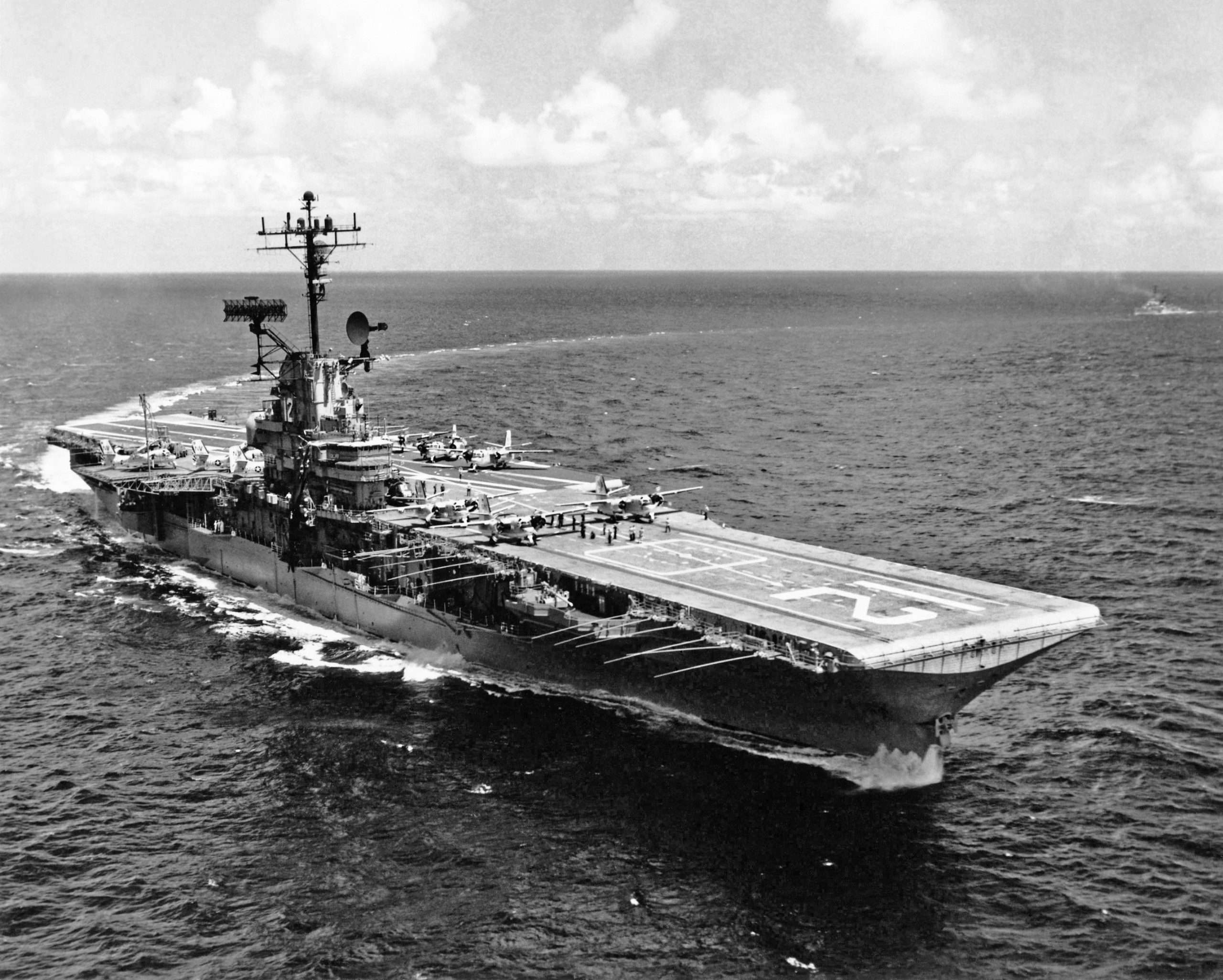
Support the Hornet: Purchase Hornet Books!
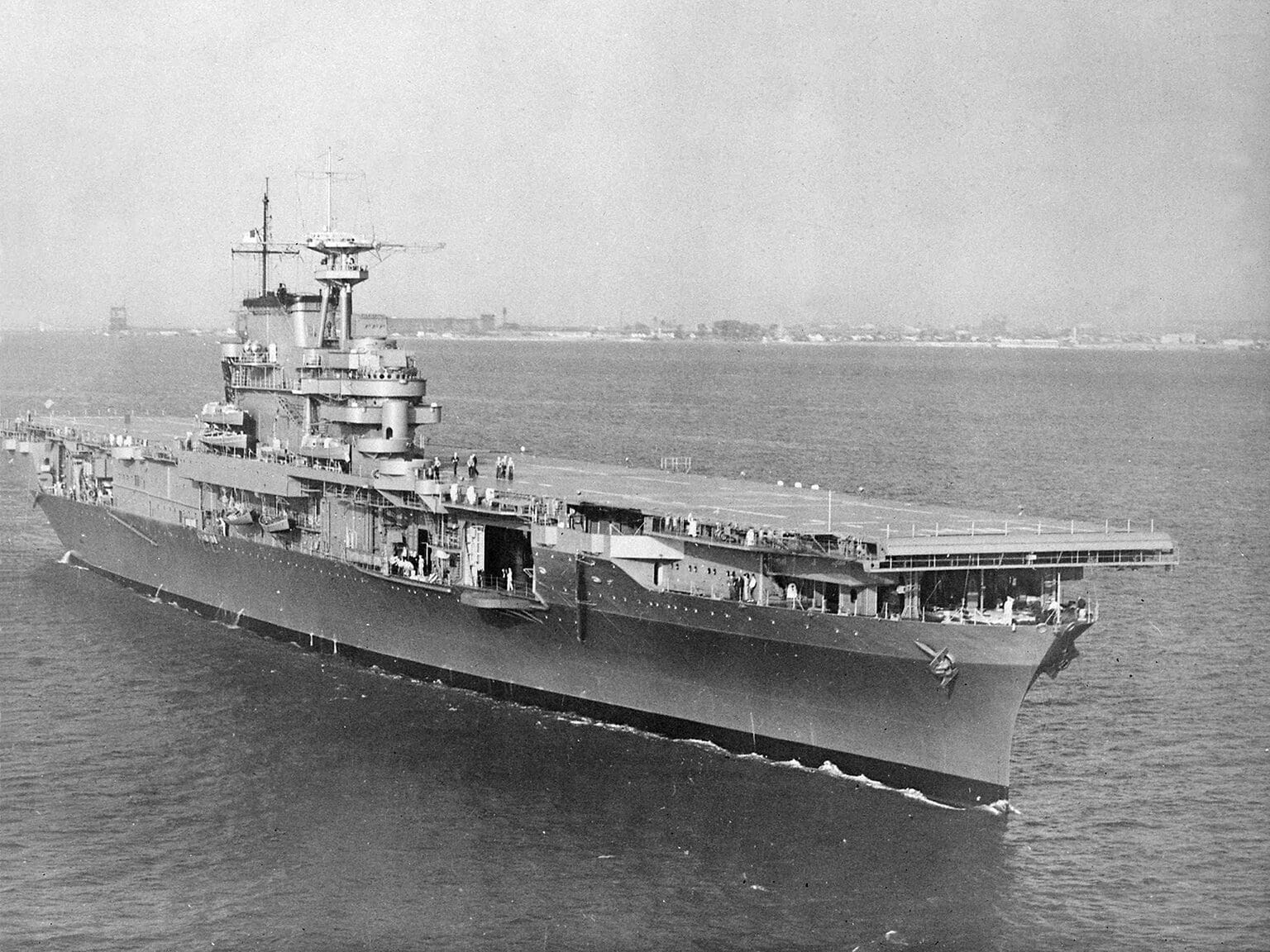
USS Hornet CV-8
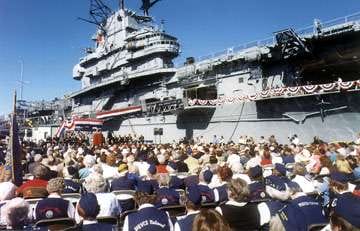
USS Hornet CV-12
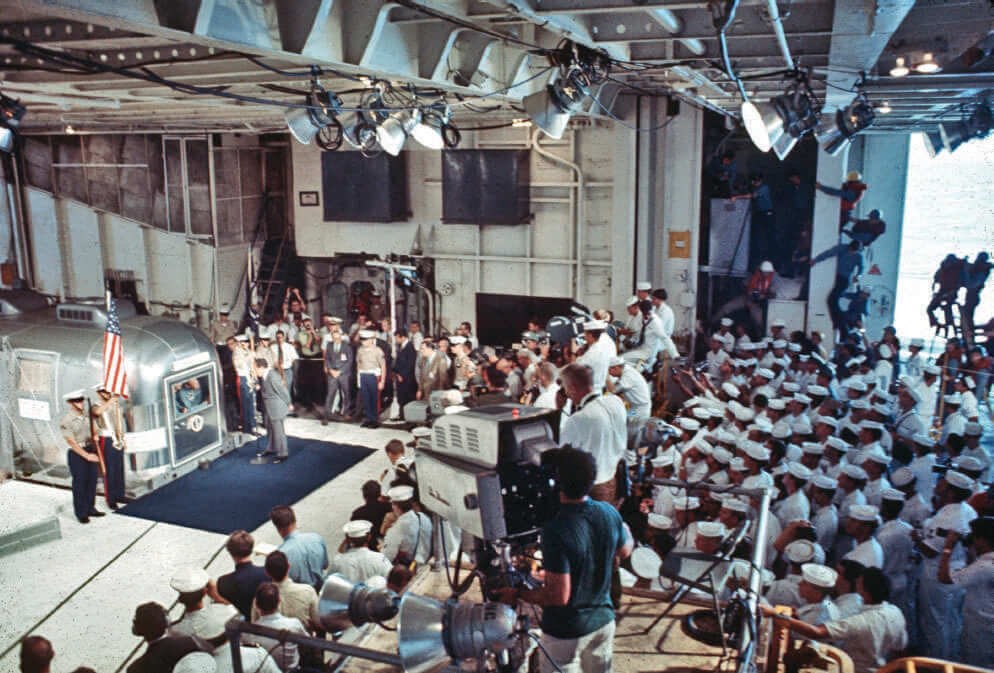
Apollo Splashdown

The Richey Collection
